Disease browse displayed diseases included in CVD Atlas, and different levels of information whether contained in CVD Atlas were shown.
By clicking specific disease name or CVD Atlas disease ID, details of this disease will be displayed. The disease detail page consists of several module as follows:
4.1.1.1 Basic information
This panel contains two modules: Basic information and Gene prioritization.
a) Basic information displays disease name, CVD Atlas disease ID, synonyms, MeSH ID, Disease ontology ID, and description of this disease.
b) Gene prioritization displays the disease-gene score calculated by CVD Atlas.
4.1.1.2 Genomic
This panel contains three modules: GWAS Catalog significant SNP, GWAS Colocalization and Variant-disease association.
a) GWAS Catalog significant SNP demonstrates significant SNPs collected from GWAS summary statistics of GWAS Catalog. Only SNPs with P value < 5e-8 are considered as significant SNPs, and are displayed in table. There are two plots above the table. Left one demonstrates top risk SNPs of this disease, and right one shows the ancestry composition of datasets related with this disease. Besides, users can change the options above the plots to get interested information.
b) GWAS Colocalization demonstrates colocalization results calculated from GWAS summary statistics and GTEx v8 eQTLs. Combination cutoffs (PP4>=0.75, PP3+PP4>=0.9, and PP4/PP3 >=3) were used as powerful colocalization evidence.
c) Disease-variant association collected associations of disease and variants from publications and prior databases.
4.1.1.3 Transcriptomic
This panel contains two modules: Differentially expressed gene and Disease-gene association.
a) Differentially expressed gene displayed genes that differentially expressed, which were calculated from datasets or curated manually. Only genes with |log2FC|>=1 and adjusted P value < 0.05 were considered as DEGs. There are two plots above the table. Left one demonstrates top DEGs of this disease, and right one shows the tissue composition of datasets related with this disease. Besides, users can change the options above the plots to get interested information.
b) Disease-gene association collected transcriptomic associations of disease and genes from publications and prior databases.
4.1.1.4 Epigenomic
This panel contains two modules: Differentially methylated position and Disease-gene association.
a) Differentially methylated position displayed possitions that differentially methylated, which were calculated from datasets or curated manually. Only genes with |delta beta|>=0.2 and adjusted P value < 0.05 were considered as DMPs.
b) Disease-gene association collected epigenomic associations of disease and genes from publications and prior databases.
4.1.1.5 Metabolomic
This panel contains one modules that named Differential expressed metabolite, which displayed metabolites differentially expressed in this disease, calculated from datasets.
4.1.1.6 Proteomic
This panel contains one modules that named Differential expressed protein, which displayed proteins differentially expressed in this disease, calculated from datasets.
4.1.1.7 Chemical
This panel contains one modules that named Disease-chemical association, which displayed chemicals associated with this disease, integrated from public databases. In CTD tab, there are two plots above the table. Left one demonstrates the number of publications of chemicals associated with this disease in "Inference score" way, and right one shows in "direct evidence" way. Besides, users can change the options above the plots to get interested information.
4.1.1.8 Other information
This panel contains one modules that named Non-human genes associated with disease, which displayed genes associated with this disease in non-human species, curated manually or integrated from public databases.


